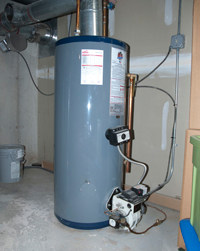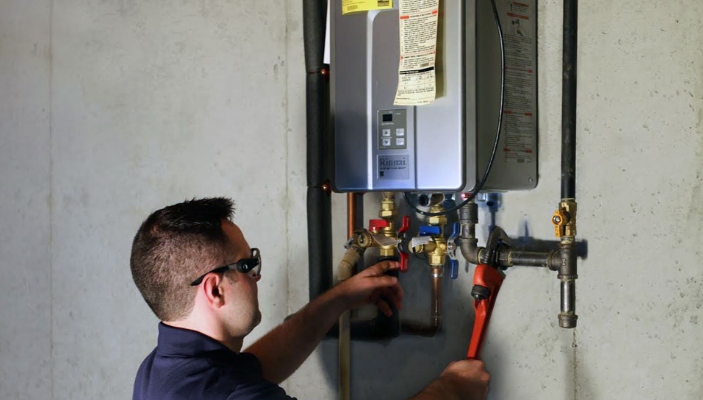Essential Maintenance Tips for Your Home's Hot Water System
Schedule Free EstimateHow do you really feel in regards to Tips on Maintaining a Water Heater?

Warm water is essential for day-to-day convenience, whether it's for a refreshing shower or cleaning meals. To guarantee your hot water system runs successfully and lasts longer, routine upkeep is essential. This article gives functional suggestions and insights on just how to preserve your home's warm water system to avoid disruptions and pricey repair work.
Intro
Maintaining your home's warm water system may seem difficult, however with a few simple actions, you can guarantee it operates smoothly for years to find. This guide covers everything from recognizing your warm water system to DIY maintenance pointers and recognizing when to employ professional aid.
Value of Preserving Your Hot Water System
Normal upkeep not only expands the life expectancy of your warm water system however additionally ensures it runs efficiently. Disregarding maintenance can bring about decreased performance, higher power bills, and even early failure of the system.
Indications Your Warm Water System Demands Upkeep
Knowing when your hot water system needs interest can protect against significant concerns. Look out for signs such as inconsistent water temperature level, odd sounds from the heating system, or rusty water.
Understanding Your Hot Water System
Before diving right into upkeep jobs, it's handy to recognize the basic components of your hot water system. Usually, this consists of the water heater itself, pipes, anode poles, and temperature level controls.
Monthly Maintenance Tasks
Normal month-to-month checks can aid capture small concerns before they intensify.
Purging the Hot Water Heater
Flushing your water heater removes sediment buildup, improving efficiency and prolonging its life.
Checking and Replacing Anode Rods
Anode poles protect against deterioration inside the container. Evaluating and changing them when broken is vital.
Checking and Changing Temperature Level Settings
Adjusting the temperature settings makes certain optimum efficiency and security.
DIY Tips for Maintenance
You can perform numerous maintenance jobs yourself to keep your warm water system in top problem.
Checking for Leakages
Routinely check pipes and links for leaks, as these can bring about water damages and higher expenses.
Testing Pressure Alleviation Valves
Testing the pressure safety valve guarantees it functions properly and protects against extreme pressure build-up.
Insulating Pipelines
Insulating warm water pipes minimizes heat loss and can conserve power.
When to Call an Expert
While DIY upkeep is useful, some concerns need professional experience.
Complicated Issues Calling For Expert Help
Instances include significant leaks, electric issues, or if your water heater is constantly underperforming.
Routine Specialist Maintenance Conveniences
Expert maintenance can consist of thorough evaluations, tune-ups, and making certain conformity with safety and security standards.
Final thought
Normal maintenance of your home's hot water system is important for effectiveness, long life, and cost financial savings. By following these tips and understanding when to look for specialist help, you can guarantee a trustworthy supply of warm water without unexpected interruptions.
How to Maintain an Instant Hot Water Heater
Before tinkering with your hot water heater, make sure that it’s not powered on. You also have to turn off the main circuit breaker and shut off the main gas line to prevent accidents. Also turn off the water valves connected to your unit to prevent water from flowing into and out of the appliance. 2. When you’re done, you have to detach the purge valves’ caps. These look like the letter “T†and are situated on either side of the water valves. Doing so will release any pressure that has accumulated inside the valves while at the same time avoid hot water from shooting out and burning your skin. 3. When the purge valves’ caps are removed, you have to connect your hosing lines to the valves. Your unit should have come with three hoses but if it didn’t, you can purchase these things from any hardware or home repair shops. You can also get them from retail stores that sell water heating systems. Read the user’s manual and follow it to complete this task properly. When the hosing lines are connected, open the purge port’s valves. 4. You should never use harsh chemical cleaners or solutions when cleaning your unit. Make use of white vinegar instead. It should be undiluted and you’ll probably use about 2 gallons. 5. Now flush your water heater. This task should probably take about 40 minutes. We can’t give you specific directions for this because the procedure is carried out depending on the type, model and brand of your heater. With that being said, refer to the user’s manual. 6. When you’re done draining the unit, you have to turn off the purge port valves again. Remove the hosing lines that you earlier installed on each of the water valves. Put the valve caps (purge port) back in their respective places and be very careful so as not to damage the rubber discs that are found inside these caps. 7. Now that everything’s back in place, check your user’s manual again to find out how to reactivate your water heating system. 8. Once it is working, turn one of your hot water faucets on just to let air pass through the heater’s water supply pipes. Leave the tap on until water flows smoothly out of it. https://www.orrplumbing.com/blog/2014/september/how-to-maintain-an-instant-hot-water-heater/

Do you really like reading about Tips on Maintaining a Water Heater? Place feedback directly below. We'd be delighted to see your insights about this blog. Hoping that you come back again in the future. Please pause to share this entry if you enjoyed reading it. We enjoy reading our article about What Kind of Maintenance Do Water Heaters Need?.
Information Here